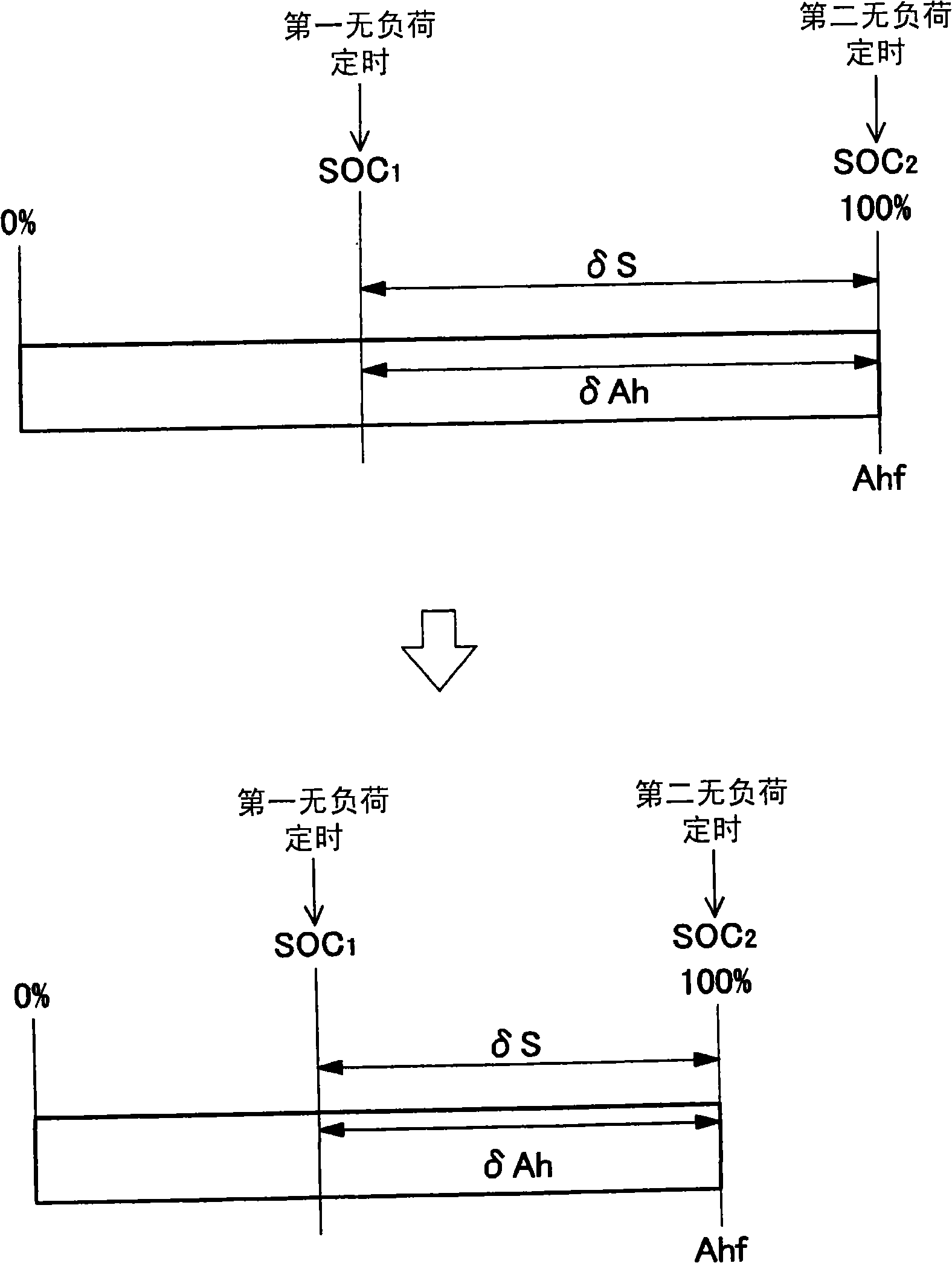Battery full charge capacity detection method
A technology of full charge capacity and detection method, which is applied to secondary batteries, measurement of electrical variables, circuits, etc., and can solve problems such as difficult detection of full charge capacity of batteries
- Summary
- Abstract
- Description
- Claims
- Application Information
AI Technical Summary
Problems solved by technology
Method used
Image
Examples
Embodiment Construction
[0037] Hereinafter, embodiments of the present invention will be described based on the drawings. Among them, the embodiments shown below are used to illustrate a method for detecting a full charge capacity of a battery that embodies the technical idea of the present invention. The method for detecting a full charge capacity in the present invention is not limited to the following method. Furthermore, this specification does not limit the components shown in the claims to the components of the embodiment.
[0038] Fig. 1 is a circuit diagram for detecting the residual capacity of an assembled battery that supplies power to a mobile phone. The battery pack includes: a rechargeable battery 1; a current detection unit 2 that detects the charge and discharge current of the battery 1; a voltage detection unit 3 that detects the voltage of the battery 1; a temperature detection unit 4 that detects the temperature of the battery 1; and arithmetic current detection The output signal of ...
PUM
 Login to View More
Login to View More Abstract
Description
Claims
Application Information
 Login to View More
Login to View More - R&D
- Intellectual Property
- Life Sciences
- Materials
- Tech Scout
- Unparalleled Data Quality
- Higher Quality Content
- 60% Fewer Hallucinations
Browse by: Latest US Patents, China's latest patents, Technical Efficacy Thesaurus, Application Domain, Technology Topic, Popular Technical Reports.
© 2025 PatSnap. All rights reserved.Legal|Privacy policy|Modern Slavery Act Transparency Statement|Sitemap|About US| Contact US: help@patsnap.com



